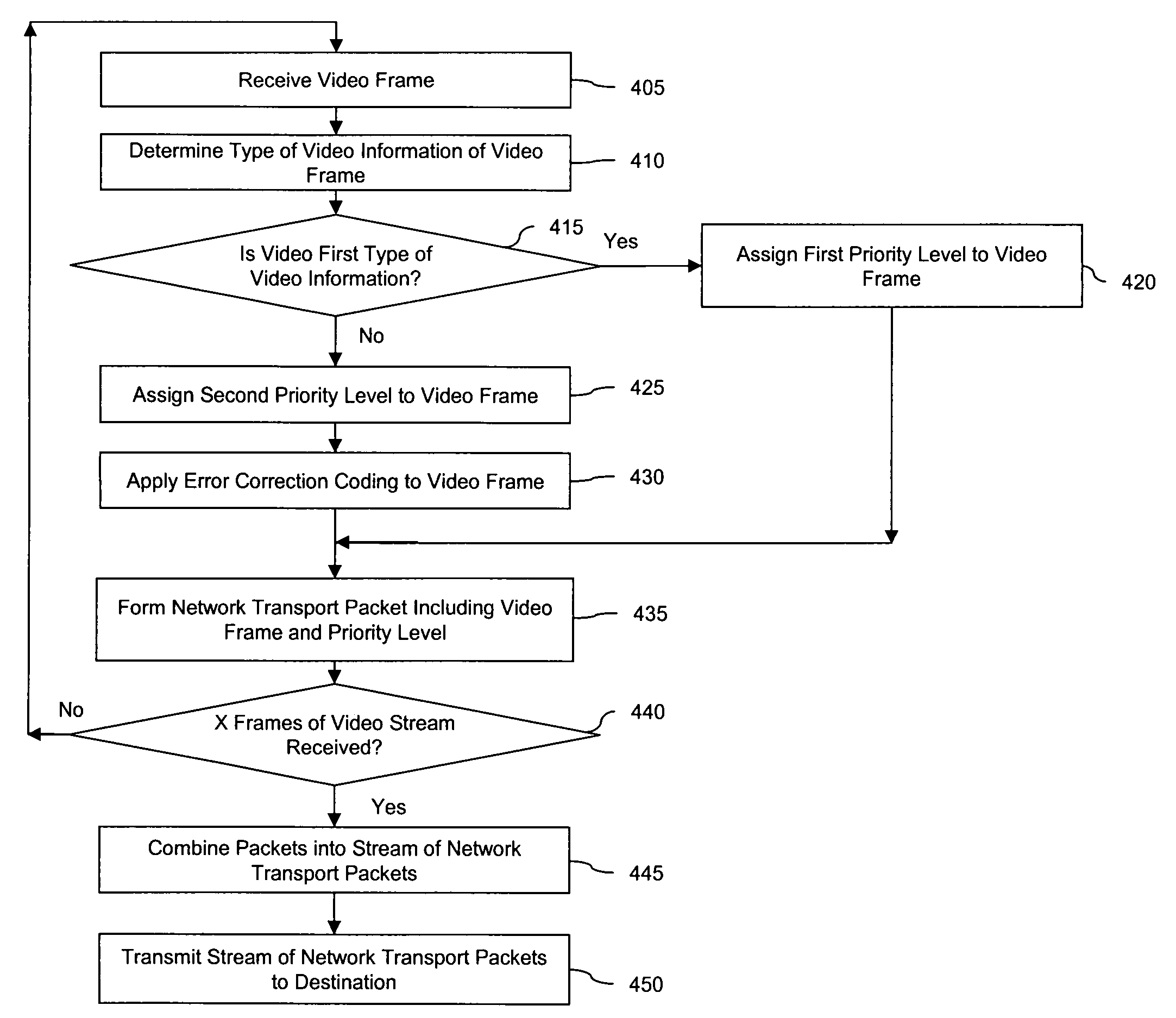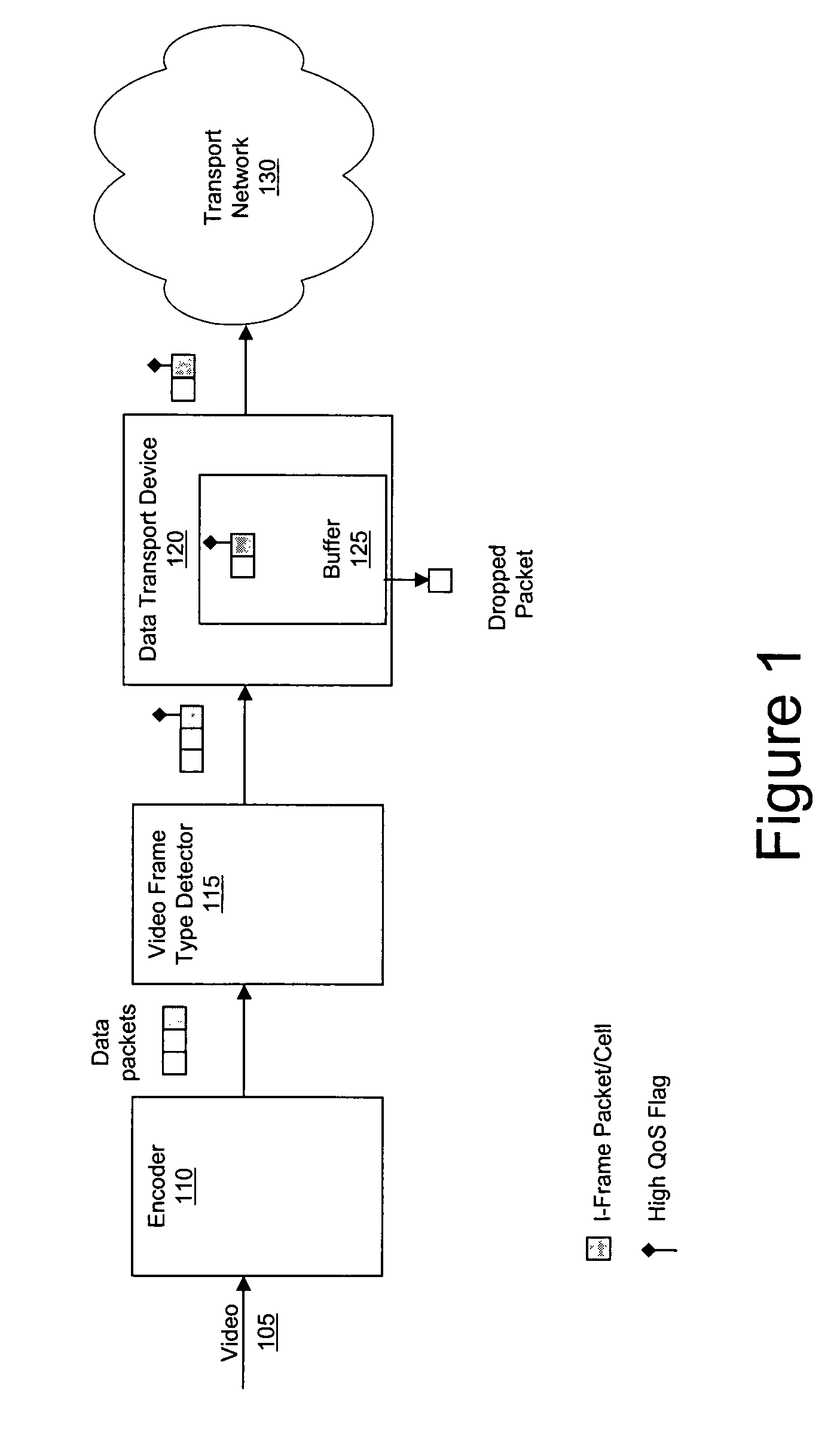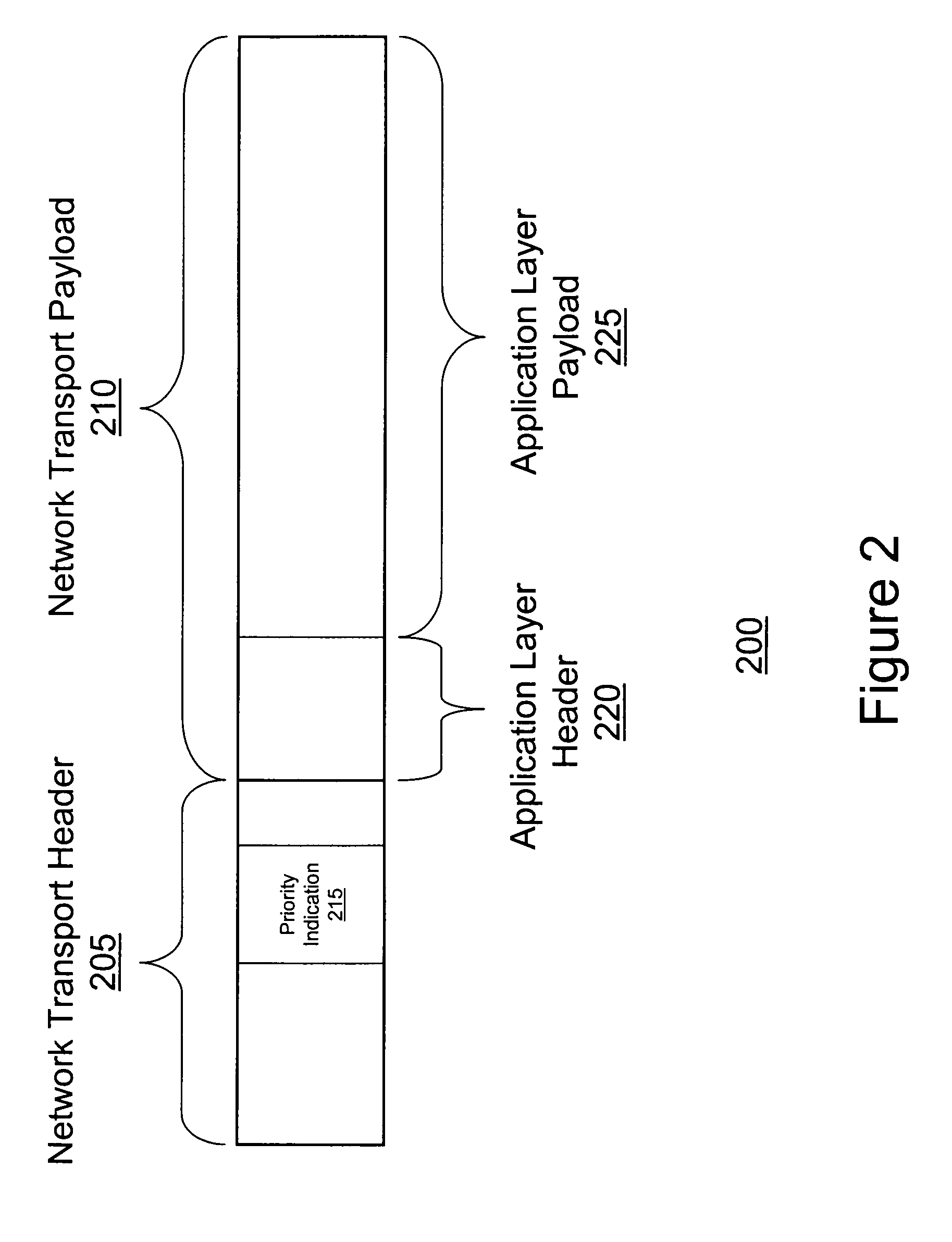System and method for transmitting video information
- Summary
- Abstract
- Description
- Claims
- Application Information
AI Technical Summary
Benefits of technology
Problems solved by technology
Method used
Image
Examples
Embodiment Construction
[0009]FIG. 1 is a block diagram of an exemplary system in accordance with the present invention. The system includes an encoder 110, video frame type detector 115, data transport device 120 and transport network 130. Although illustrated as separate elements, encoder 110, video frame type detector 115 and data transport device 120 can be integrated into a single component. Transport network 130 can be any type of wired and / or wireless network.
[0010]Encoder 110 receives a plurality of video frames of a video stream 105. When encoder 110 encodes video according to the Motion Pictures Experts Group (MPEG) Group of Pictures (GOP) structure, video is encoded into three different types of frames, I-frames, P-frames and B-frames. I-frames include all of the visual information in a video frame, analogous to a JPEG picture. An I-frame is created when major new content is encoded, such as a scene change. P-frames and B-frames are designed to reduce the amount of information required to encode...
PUM
 Login to View More
Login to View More Abstract
Description
Claims
Application Information
 Login to View More
Login to View More - R&D
- Intellectual Property
- Life Sciences
- Materials
- Tech Scout
- Unparalleled Data Quality
- Higher Quality Content
- 60% Fewer Hallucinations
Browse by: Latest US Patents, China's latest patents, Technical Efficacy Thesaurus, Application Domain, Technology Topic, Popular Technical Reports.
© 2025 PatSnap. All rights reserved.Legal|Privacy policy|Modern Slavery Act Transparency Statement|Sitemap|About US| Contact US: help@patsnap.com



